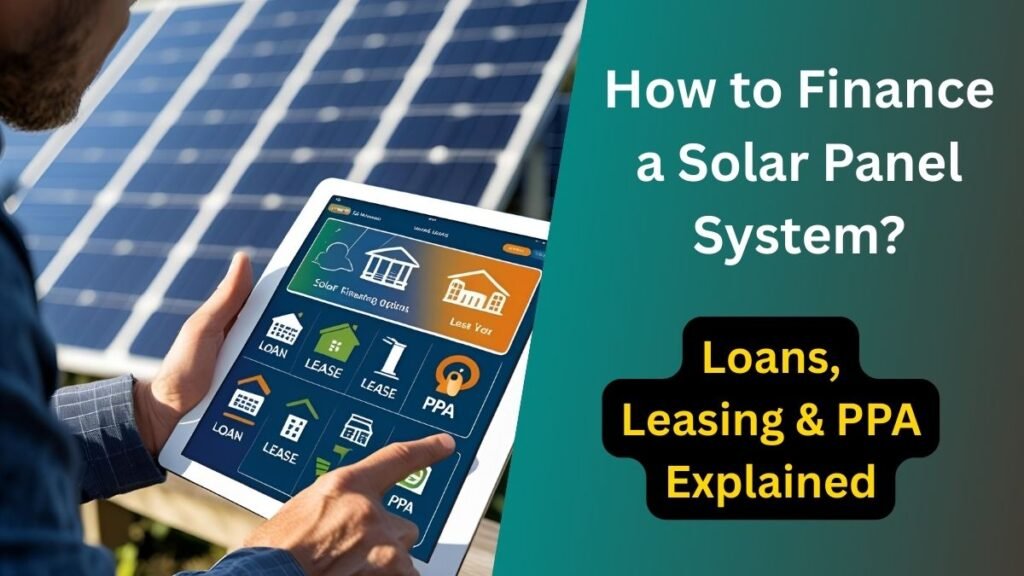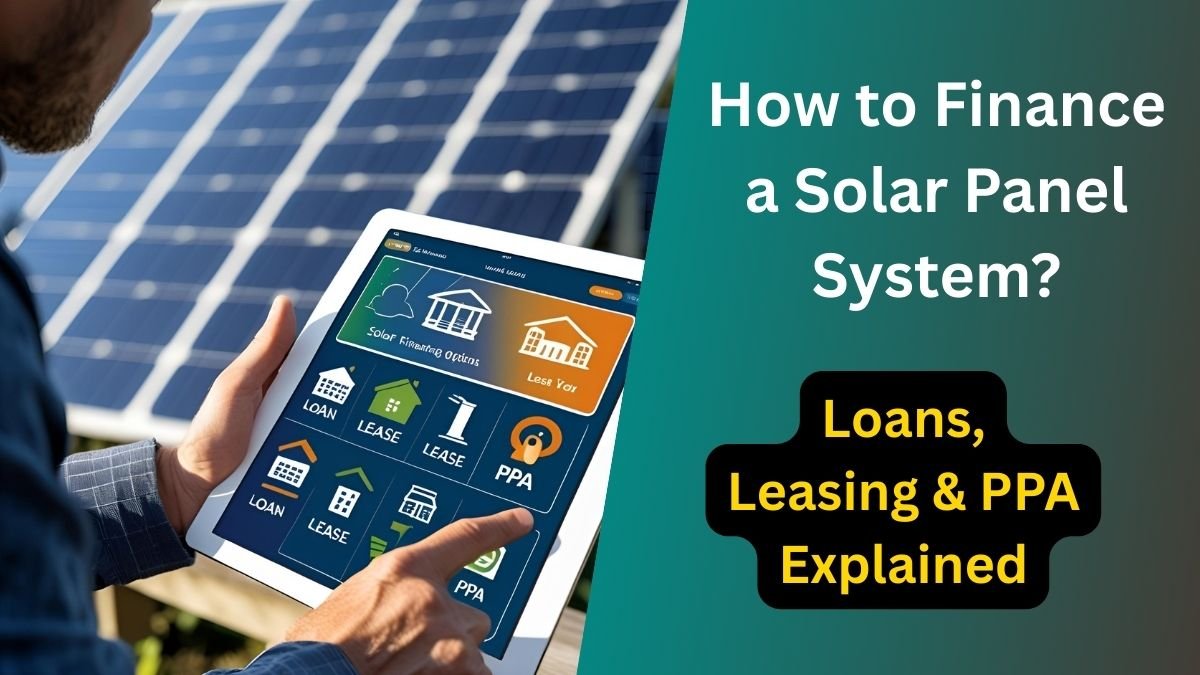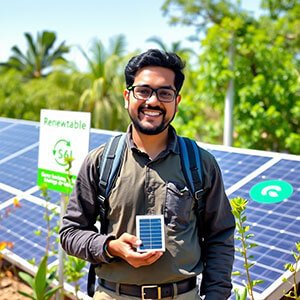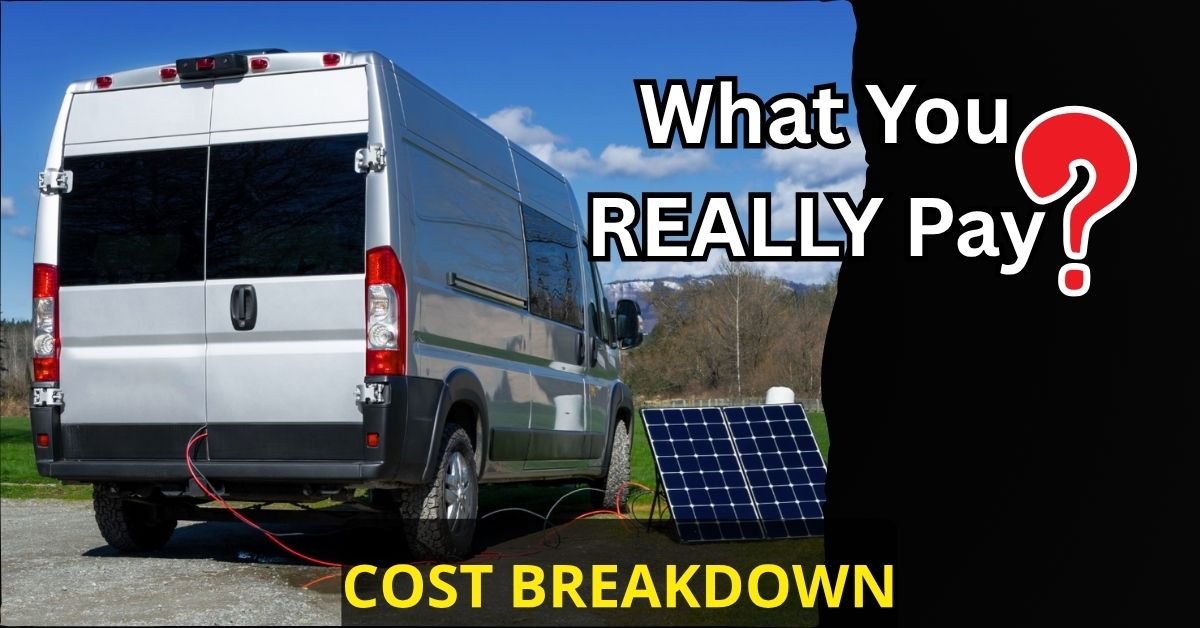Are skyrocketing electricity bills draining your wallet while the sun shines for free? It’s time to take control, and solar energy might be your ticket. But how do you afford it? The answer lies in smart solar panel financing.
Many homeowners want to harness clean energy and slash electricity bills, but aren’t sure how to finance solar panels affordably. The good news? You don’t need tens of thousands in cash. With loans, leases, and power purchase agreements (PPAs), solar is more accessible than ever.
This guide will help you to each financing option, compares pros and cons, and helps you pick the best path for your budget and energy goals.
Why Solar Financing Matters
Installing a residential solar system can cost anywhere from $10,000 to $30,000 or more, depending on size and location. Most homeowners don’t pay cash upfront, and they don’t need to.
Understanding your solar financing options can:
- Unlock federal and state solar incentives
- Cut down monthly energy bills instantly
- Help you go solar with little to zero upfront cost
- Ensure you own your system, or benefit from it on your terms
Overview of Solar Financing
Before we get into the specifics of the main topic, let’s clarify what solar financing actually means. Essentially, it’s a way to fund your solar system without paying the full cost up front. Whether you own your home or run a business, choosing the right financing plan affects:
- Your monthly savings
- Tax benefits eligibility
- Ownership of the system
- Maintenance responsibilities
- Long-term return on investment
It’s important to understand the three main ways to finance solar panels:
| Financing Method | Ownership | Upfront Cost | Monthly Payment | Best For |
| Solar Loan | You | Low–Medium | Yes | Homeowners seeking long-term value and tax credits |
| Solar Lease | Lessor | Low | Yes | Those who want zero maintenance responsibilities |
| PPA (Power Purchase Agreement) | Third-party | $0 | Pay per kWh used | Budget-conscious users wanting easy entry |
Let’s discuss each so you can decide which one works best for your home, budget, and goals.

How to Finance a Solar System?
There are three main pathways to go solar without paying the full sticker price up front:
- Solar Loans
- Solar Leases
- Power Purchase Agreements (PPAs)
Each has unique pros and cons depending on your financial situation, credit score, and desire for ownership.
Loan Options
Solar loans are one of the most popular and homeowner-friendly ways to finance a solar system.
There are two types:
- Secured Loans – Backed by collateral (like your home); often lower interest rates
- Unsecured Loans – No collateral required; higher rates but easier to qualify
Key Benefits:
- You own the system and qualify for tax incentives
- Add value to your home
- Pay off the system over 5–25 years
Watch Out:
- Monthly payments start immediately
- Your credit score affects the rate
💡 Pro Tip: Compare offers from solar financing platforms like Mosaic, LightStream, or EnerBank USA for the best terms.
Leasing Explained
With a solar lease, a company installs panels on your roof, and you “rent” the system with fixed monthly payments.
You don’t own the system, but you benefit from reduced electricity bills.
Key Benefits:
- No upfront cost
- Maintenance and repairs are handled for you
- Predictable monthly bills
Considerations:
- You miss out on tax incentives
- Less long-term savings compared to owning
- May complicate home resale
⚠️ Common Mistake: Leases can complicate home sales—transferring contracts isn’t always easy.
What Is a PPA?
A Power Purchase Agreement (PPA) is similar to leasing, but instead of paying a flat rate, you pay for the electricity your system produces, often at a lower rate than your utility.
How It Works:
- The installer owns and maintains the system
- You buy the electricity at a set rate per kWh
- The rate is often lower than your local utility
Think of it like this: A company installs and owns the system, and you agree to buy the energy from them.
Pros and Cons of PPA
✅ Pros:
- Zero upfront cost
- Immediate energy bill savings
- No responsibility for maintenance or repair
❌ Cons:
- No ownership = no tax credits
- May have escalator clauses that raise rates over time
- Can complicate property resale or refinance
| Pros | Cons |
| No initial cost | You don’t own the system |
| Low-risk energy savings | Limited savings over 20+ years |
| Professional system upkeep | Complex long-term contract terms |
📊 Example:
| Scenario | Utility Bill | PPA Cost | Savings |
| Average Monthly Usage (900 kWh) | $120 | $90 | $30/month |
⚖️ Pros and Cons Comparison Table
| Feature | Solar Loan | Solar Lease | PPA |
| Ownership | Yes | No | No |
| Upfront Cost | Varies | Often $0 | Usually $0 |
| Tax Credits Eligible | Yes | No | No |
| Maintenance Responsibility | Yours | Provider | Provider |
| Best For | Savers, DIYers | Renters, Minimalists | Short-term residents |
Choosing the Best Option for You
Ask yourself: To decide which financing route is best for you, consider –
- Do you want to own the panels? → Loan
- Prefer $0 down and no upkeep? → Lease or PPA
- Eligible for tax credits? → Loans maximize savings
Actionable Tip: Get 3-5 quotes from lenders/installers to compare terms.
Decision Checklist:
- ☑️ Check your credit score
- ☑️ Compare total lifetime cost
- ☑️ Consider roof condition and warranty
- ☑️ Factor in resale value impact
- ☑️ Evaluate maintenance obligations
📘 Expert Advice: “Homeowners aiming for maximum long-term savings should consider solar loans, especially if they qualify for the Federal Solar Investment Tax Credit (ITC),” says renewable energy consultant Maria Chen.
Bonus: Government Subsidy Options
Before choosing how to finance solar panels, check your eligibility for:
- Federal Solar Tax Credit (ITC): Covers 30% of your system cost through 2032
- State Incentives & Rebates: Vary by location (e.g., California’s SGIP, New York’s NY-Sun)
- Net Metering Programs: Earn credit for sending unused electricity back to the grid
💡 Use the DSIRE tool to find solar incentives in your ZIP code.
People Also Ask:
Q: Can I finance solar panels with bad credit?
A: Yes, but your interest rate will be higher. Some lenders offer flexible programs for credit scores under 650.
Q: Is it better to lease or buy solar panels?
A: Buying offers long-term savings and ownership. Leasing offers simplicity but less ROI.
Q: What’s the cheapest way to get solar panels?
A: PPAs and leases offer $0-down entry. However, loans give better value over time.
Q: Can I pay for solar panels monthly?
A: Absolutely. Loans, leases, and PPAs all offer monthly payment structures.
You can read: Solar Panel Installation Cost in Australia: State-Wise Guide.
Final Verdict
Financing solar panels is easier than ever. Loans offer the best ROI, leases/PPAs simplify the process, and tax credits sweeten the deal. Ready to start?
🚀 Next Step: Use a solar loan calculator (like Bankrate’s) or get free quotes from vetted installers.







